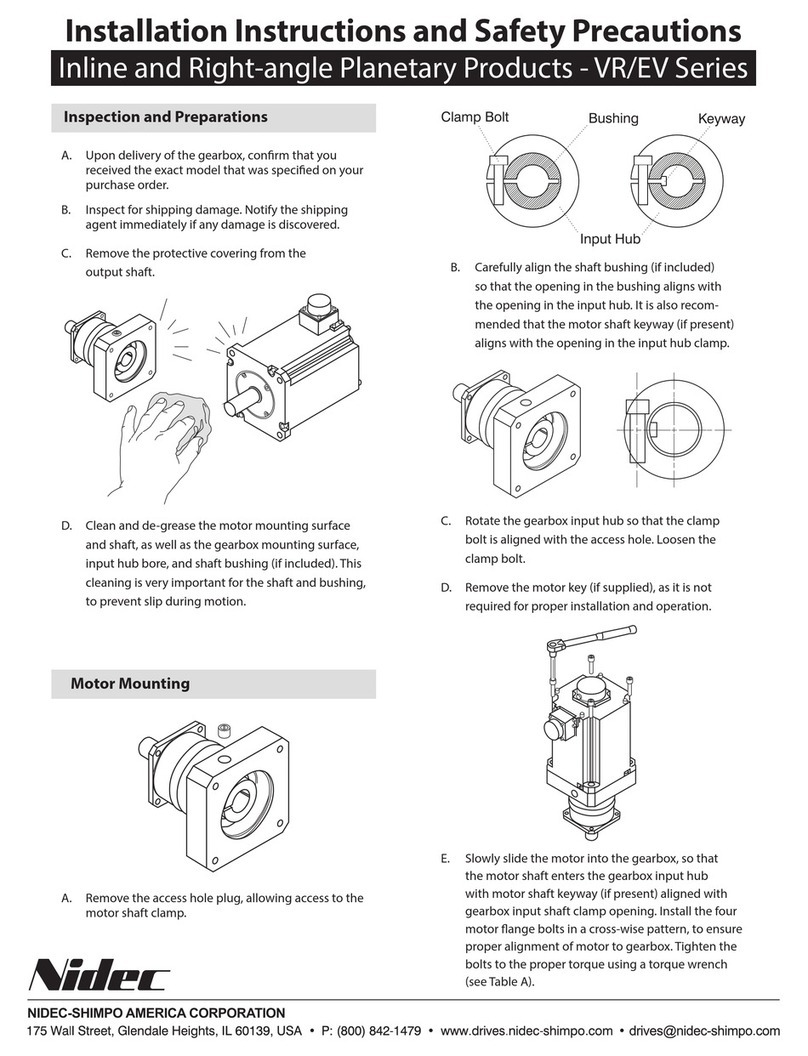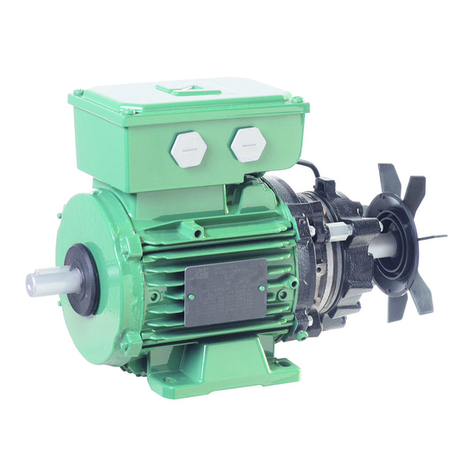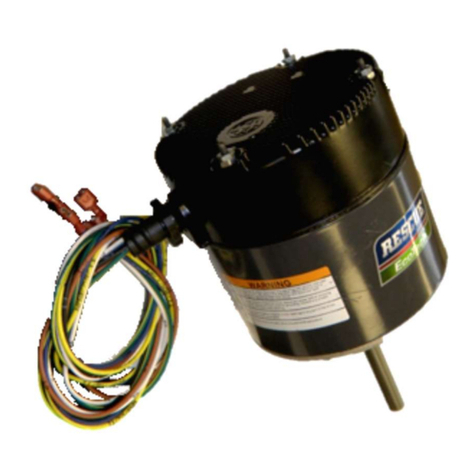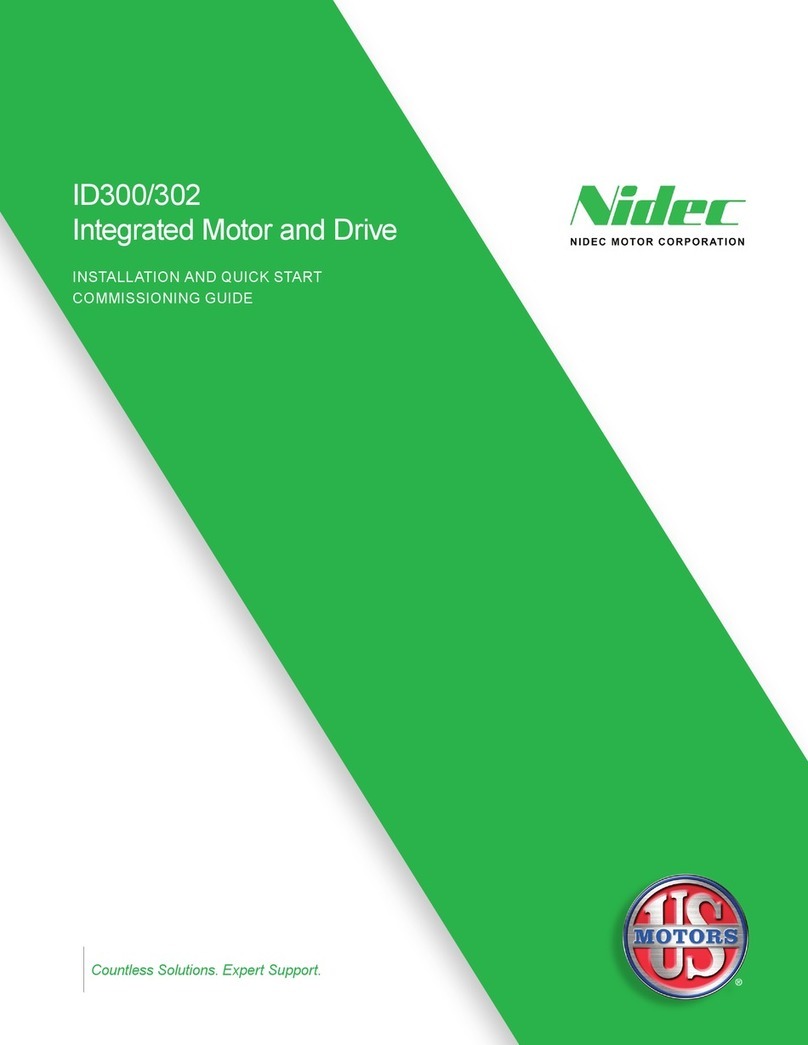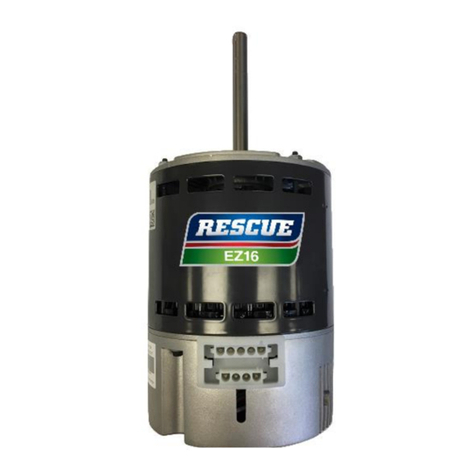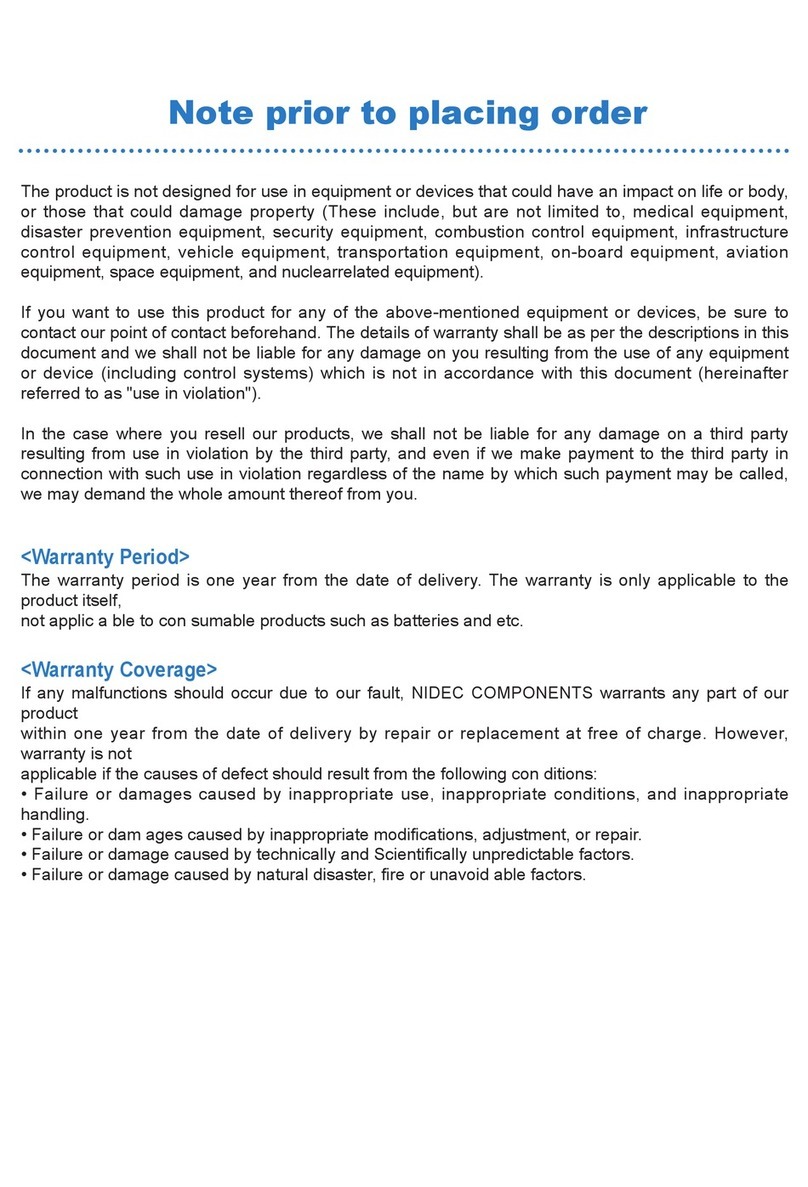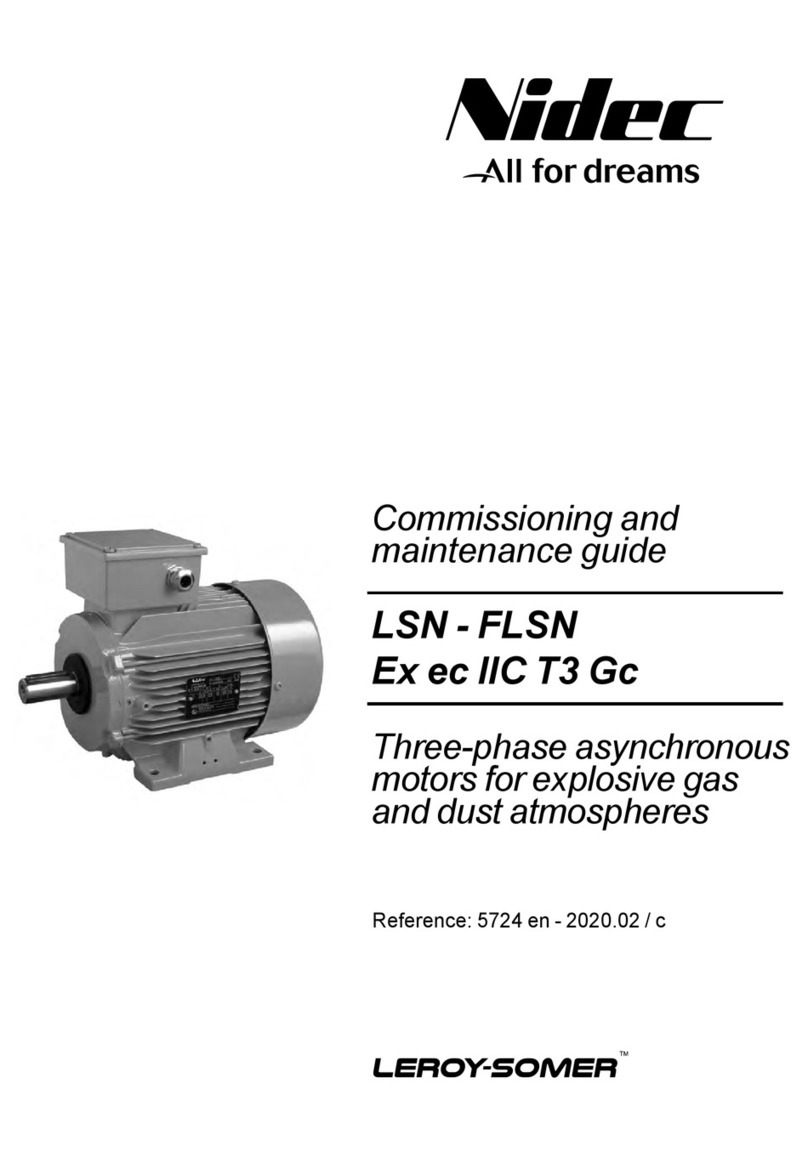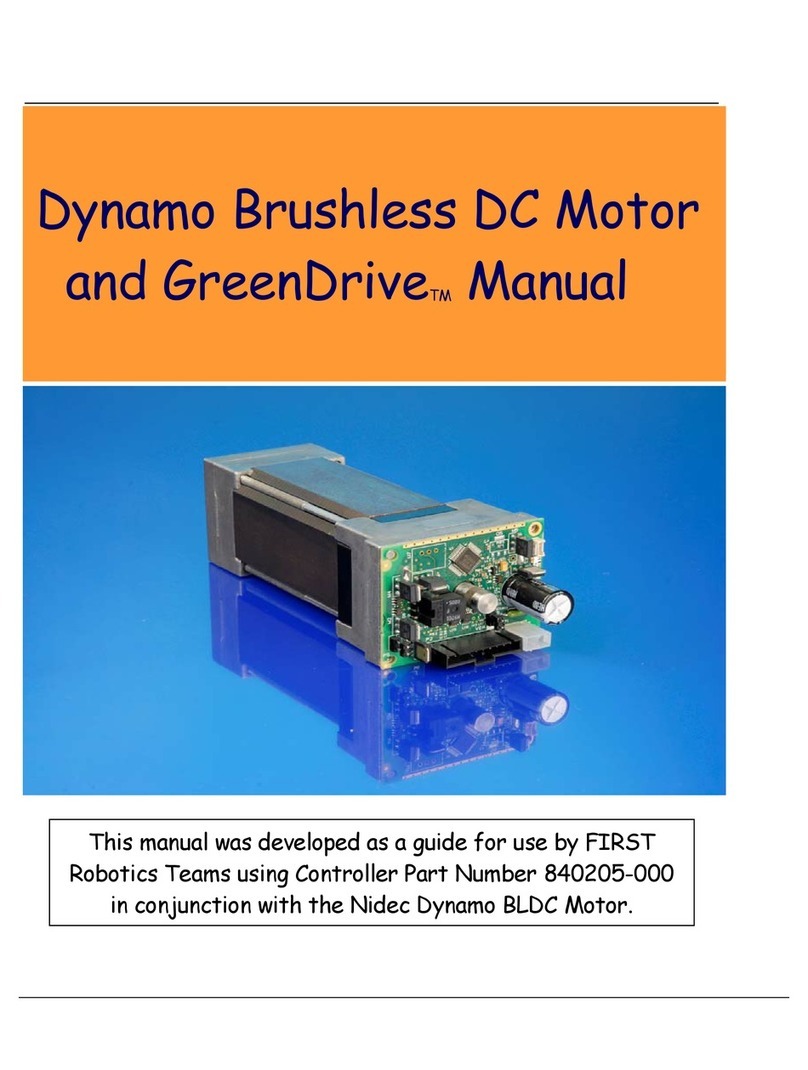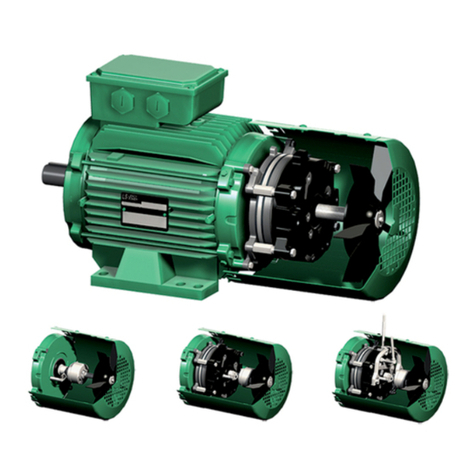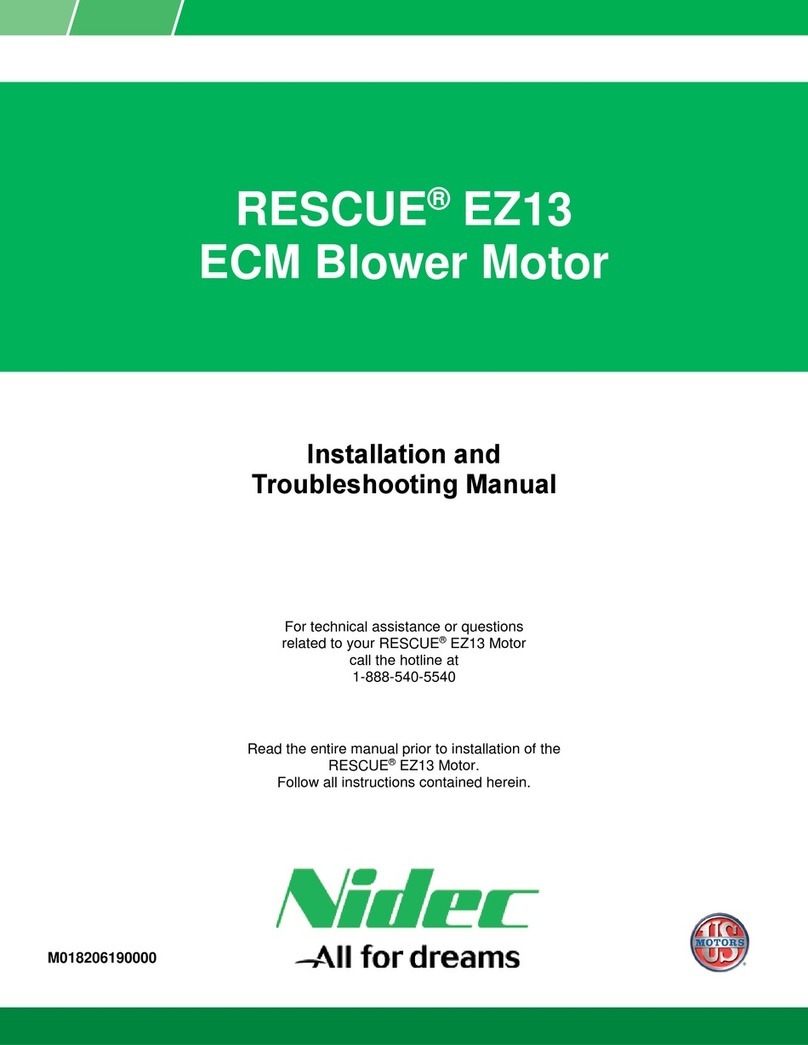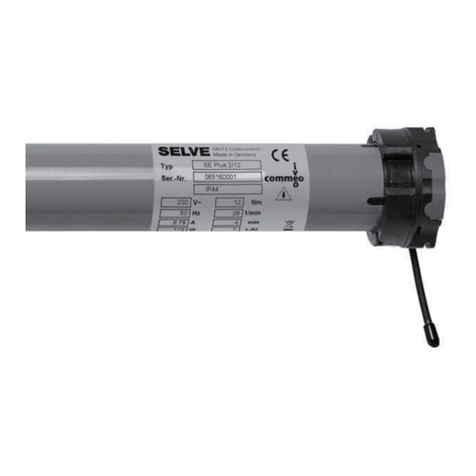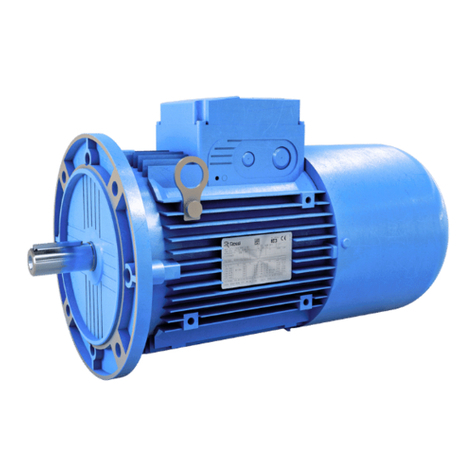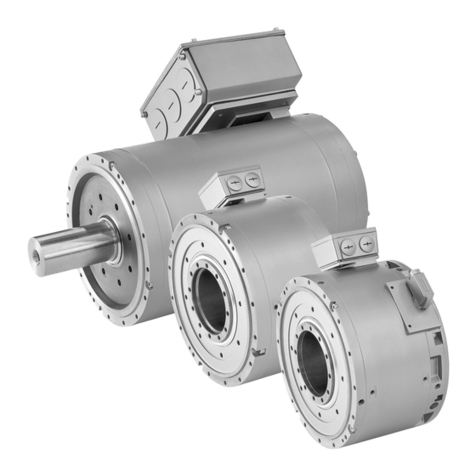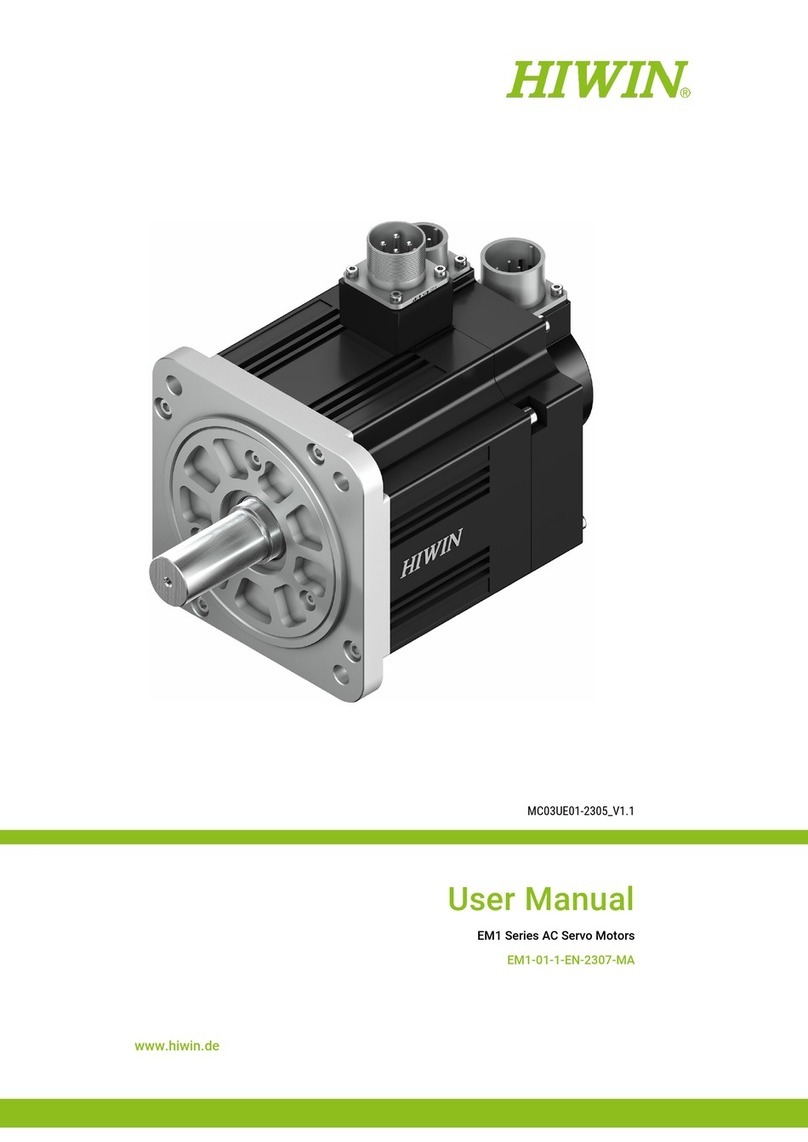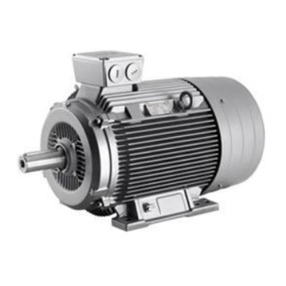CONTENTS
1 - RECEIPT ............................................................... 5
1.1 - Identication............................................................5
1.2 - Storage ...................................................................6
2 - ASSEMBLY ........................................................... 6
2.1 - Checking the insulation ...........................................6
2.2 - Location - ventilation ...............................................7
2.3 - Coupling..................................................................7
2.4 - Electrical guidelines ..............................................10
2.5 - Mains connection ..................................................13
3 - ROUTINE MAINTENANCE ................................. 16
3.1 - Lubrication ............................................................16
3.2 - Bearing maintenance ............................................20
4 - PREVENTIVE MAINTENANCE........................... 20
5 - TROUBLESHOOTING GUIDE............................ 21
6 - CORRECTIVE MAINTENANCE: GENERAL ...... 22
6.1 - Dismantling the motor ...........................................22
6.2 - Checks before reassembly....................................22
6.3 - Mounting the bearings on the shaft........................22
6.4 - Reassembling the motor........................................22
6.5 - Reassembling the terminal box .............................22
7 - POSITION OF LIFTING RINGS........................... 23
8 - SPARE PARTS.................................................... 24
9 - RECYCLING........................................................ 24
DISMANTLING AND REASSEMBLY
PROCEDURES
10 - LS/LSES MOTORS ........................................... 26
10.1 - 71 to 160 MP/LR motors......................................26
10.2 - 160 M/L/LU, 180 MT/LR motors ..........................28
10.3 - 180 L/LUR, 200 L/LR/LU, 225 ST/MT/MR,
250 MZ motors ....................................................30
10.4 - 225 MG, 250 ME/MF, 280 SC/MC/SD/MD,
315 SN motors.....................................................32
10.5 - 280 SU/SK/MK, 315 (except SN) motors.............34
11 - FLS/FLSES MOTORS....................................... 36
11.1 - 80 to 132 motors..................................................36
11.2 - 160, 180 MR motors ............................................38
11.3 - 180 M/L/LUR, 200 LU, 225 MR/SR motors ..........40
11.4 - 225 M to 280 motors ............................................42
11.5 - 315 to 355 LD motors...........................................44
12 - PLS/PLSES MOTORS ...................................... 46
12.1 - 180 LG/LGU, 200 M/L/LP/LU/LR,
225 MR motors ....................................................46
12.2 - 225 MG, 250, 280 SC/SD/MC/MD motors ...........48
12.3 - 280 MG, 315 motors............................................50
INDEX
Adjustment ...........................................................................8
Alarms - early warning ........................................................12
Assembly..............................................................................6
Balancing..............................................................................7
Belts......................................................................................9
Built-in thermal protection ...................................................12
Cable gland.........................................................................13
Cables: cross-section .................................................. 14 - 15
Capacitors .......................................................................... 11
Connection .........................................................................15
Connection diagrams..........................................................15
Corrective maintenance......................................................22
Coupling .......................................................................... 7 - 8
Coupling sleeves ..................................................................8
Digistart ..............................................................................10
Direction of rotation.............................................................15
Draining condensation .......................................................16
Earth terminal .....................................................................15
Earthing .............................................................................. 11
European directives..............................................................5
Frequency inverter.............................................................. 11
Greasing - Grease nipples ...................................... 6 - 16 - 20
Handling ...............................................................................7
Identication .........................................................................5
Inertia ywheel......................................................................8
Insulation .............................................................................6
Lifting rings .........................................................................23
Location ...............................................................................7
Logos ...................................................................................5
Lubrication..........................................................................16
Mains connection................................................................13
Nameplate ............................................................................5
Power .................................................................................10
Power supply ......................................................................15
Preventive maintenance .................................................... 20
Protection ...........................................................................12
Pulleys..................................................................................9
Receipt .................................................................................5
Routine maintenance......................................................... 20
Shields......................................................................... 16 - 20
Slide rails ..............................................................................9
Space heaters.....................................................................12
Spare parts ........................................................................ 24
Starting ...............................................................................10
Storage.................................................................................6
Terminal box ......................................................................13
Terminal box: tightening the nuts.........................................15
Tie rods: tightening .............................................................22
Tolerances ............................................................................8
Troubleshooting..................................................................21
Ventilation.............................................................................7
